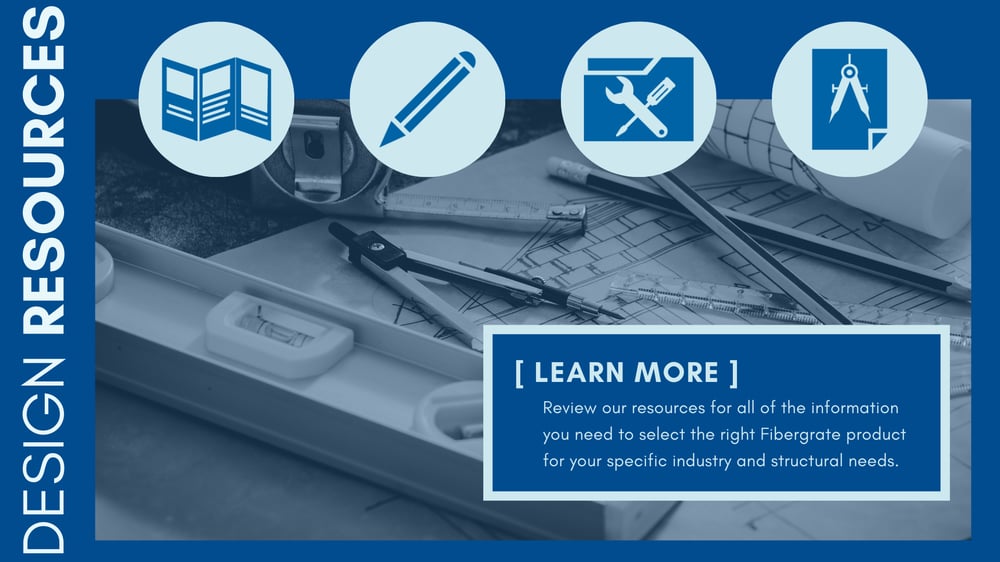Traditional construction materials like steel, wood, and concrete come with inherent limitations in...
The Advantages of FRP Structural Profiles in Construction
Traditional construction materials like steel, wood, and concrete come with inherent limitations in both new construction and remodeling projects. Steel can be susceptible to corrosion, particularly in harsh environments like coastal regions or industrial settings. Concrete, while highly durable, is incredibly heavy, posing challenges for transportation and installation. Wood can be a lightweight and affordable option, but it deteriorates quickly, even with regular maintenance. FRP structural profiles address these limitations and offer a compelling alternative.
Fibergrate: A Leading Provider of FRP Structural Profiles

FRP vs steel infographic
Fibergrate is a leading provider of high-quality FRP structural profiles, including the renowned Dynaform® line. We utilize high-quality resins and advanced manufacturing processes to produce strong, durable, and reliable FRP structural profiles. The company is committed to innovation and customer satisfaction, consistently developing new solutions to meet the evolving needs of the construction industry.
Here’s an example from Fibergrate Regional Sales Manager, Dave Anderson, of why more and more companies are choosing FRP over other materials: “We’re currently working to develop a structural system for piers. Most of these structures are wood right now. Every year there is maintenance in terms of upkeep or replacing rotten pieces. You’re looking at a complete replacement every 10 years with wood piers. FRP is designed to last for decades with no issues.” Many Fibergrate FRP projects have been performing for 30-40+ years or more in wet environments. While the initial cost is higher, the ROI doesn’t take too many years to capture.
FRP Structural Profiles in Construction Applications


Woodward Ave FRP Structural Profiles and Christie Digital Dynaform Structural Shapes
FRP structural profiles find diverse applications across various sectors of the construction industry:
- Infrastructure:
- Bridges, tunnels, and overpasses
- Marine structures including piers, docks, boat ramps, and offshore platforms
- Corrosion-resistant tanks
- Building Facades:
- Architectural cladding panels
- Decorative elements such as FRP structural columns and beams
- Industrial Applications:
- Chemical processing plants
- Wastewater treatment facilities
- Oil and gas platforms
Case Studies: FRP Structural Profiles in Action
Woodward Avenue Water Treatment Plant
The Woodward Avenue Water Treatment Plant project presented challenges related to the materials used for handrails and platforms. Traditional materials were susceptible to corrosion and required significant maintenance. Fibergrate addressed these concerns by utilizing FGI-AM resin and Dynaform® Structural Shapes. This solution provided a safe, clean, and long-lasting alternative, demonstrating the effectiveness of FRP in demanding applications.
Hitachi Data Systems
Hitachi Data Systems (HDS) faced issues with their previous wooden packaging platforms, which suffered from splintering, inefficiency, and static discharge. Fibergrate's FRP grating with a conductive coating addressed these concerns, providing a durable, static-controlled platform system that met HDS's specific requirements. This case study highlights Fibergrate's commitment to innovation in FRP technology, developing customized solutions to meet the unique needs of their customers.The Advantages of FRP Structural Profiles
- High Strength-to-Weight Ratio: Lighter structures result in reduced transportation costs, easier installation, and lower foundation loads.
- Corrosion Resistance: FRP exhibits exceptional resistance to corrosion from moisture, chemicals, and harsh environmental conditions.
- Durability and Longevity: FRP structures are known for their exceptional durability and longevity. They resist weathering, degradation, and the effects of UV radiation, maintaining their structural integrity for decades.
- Versatility and Design Flexibility: FRP can be molded and shaped into a wide variety of complex geometries. This versatility allows architects and engineers to create innovative and aesthetically pleasing structures that would be difficult or impossible to achieve with traditional materials.
- Ease of Installation: FRP structural profiles are typically lightweight and easy to handle and install which can significantly reduce labor costs and accelerate construction timelines.
- Low Maintenance: Unlike steel or wood, which requires regular painting, and concrete, which may require periodic repairs, FRP structures typically require very little maintenance, resulting in significant long-term cost savings.
Contact Fibergrate today to learn more about our FRP solutions and how we can assist you in your next construction project.
Want to Keep Reading?
- Durable Data Center Design Featuring FRP
- 4 Ways to Use Fiberglass Reinforced Plastic FRP Panels to Improve Your Facility
Learn more about the specifying and designing with FRP below...
Topics: FRP, Safety, Corrosion Resistant, Construction


